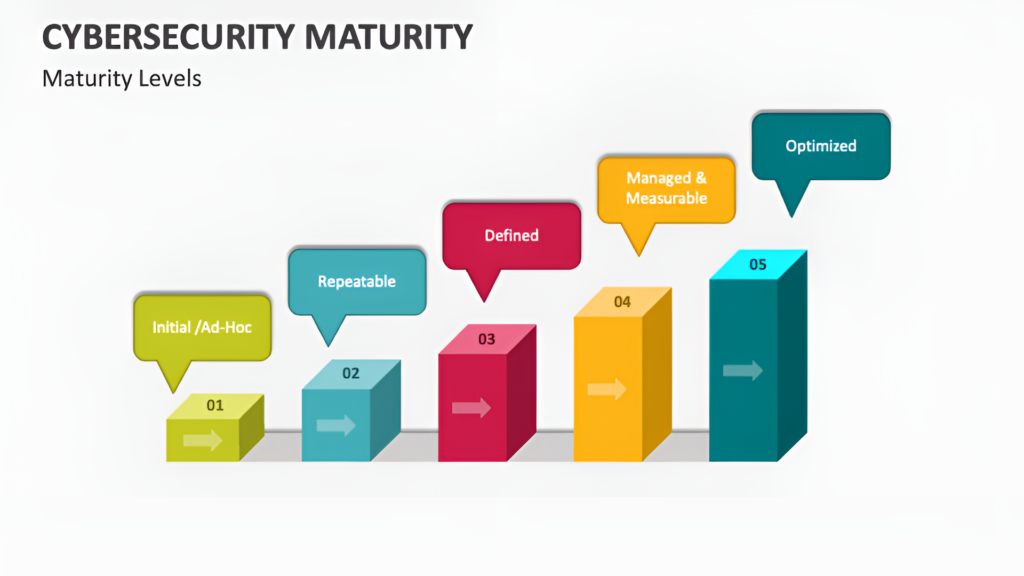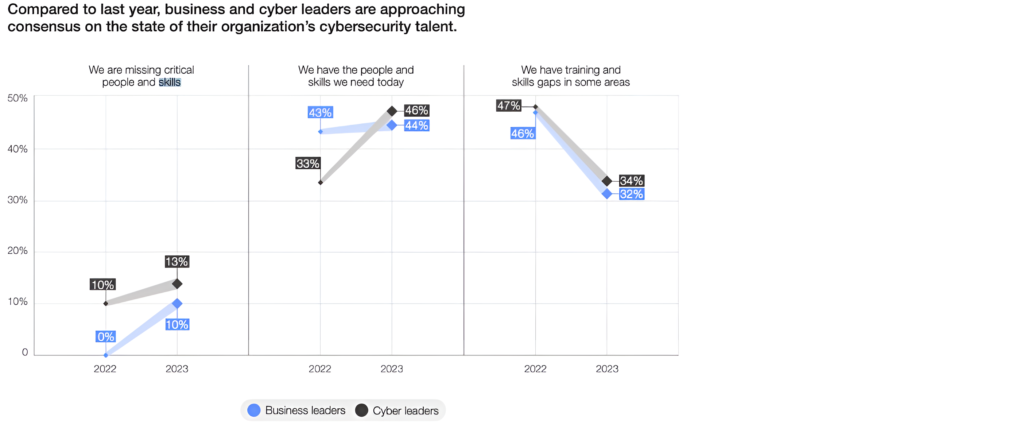
As the world becomes increasingly digital, the need for robust cybersecurity has never been more critical. The threat landscape is evolving rapidly, with cybercriminals becoming more sophisticated and finding new ways to exploit vulnerabilities in systems, applications, and even human behavior. Emerging threats such as ransomware, advanced persistent threats (APTs), IoT vulnerabilities, and AI-driven cyberattacks pose significant challenges for organizations worldwide.
However, while the demand for cybersecurity expertise is growing, there is a significant skills gap in the cybersecurity workforce. According to various reports, millions of cybersecurity positions remain unfilled globally, which exacerbates the challenges posed by these emerging threats. Closing this skills gap is essential for organizations to stay ahead of cybercriminals and protect their digital assets.
In this blog post, we will explore the importance of addressing the cybersecurity skills gap, the key skills required to combat emerging threats, and practical strategies organizations can implement to fill the gap and strengthen their cybersecurity posture.
The Cybersecurity Skills Gap: A Growing Problem
The global cybersecurity talent shortage is well-documented. According to a 2023 report by (ISC)², the global cybersecurity workforce needs to grow by 65% to effectively defend organizations against growing cyber risks. This shortage is even more pressing in the face of increasingly sophisticated cyber threats. As organizations shift more of their operations to the cloud, adopt IoT devices, and leverage AI technologies, the attack surface is expanding, and the skills required to defend against these threats are becoming more complex.
Key reasons for the cybersecurity skills gap include:
- Rapidly evolving threat landscape: Cybercriminals are constantly developing new attack techniques, making it difficult for cybersecurity professionals to stay ahead without continuous learning.
- Lack of specialized expertise: Cybersecurity is a broad field with specialized sub-domains, including network security, penetration testing, malware analysis, and incident response. Many professionals lack deep expertise in emerging areas such as cloud security, AI security, and IoT security.
- Insufficient training programs: While there is an abundance of cybersecurity certifications and training programs, many do not adequately address the specific challenges posed by new and emerging threats.
- Retirement of seasoned professionals: A significant portion of the cybersecurity workforce is nearing retirement age, leaving a gap in leadership and mentorship for younger professionals.
- Competing industries: Many skilled cybersecurity professionals are lured to higher-paying roles in tech, finance, and other industries, exacerbating the shortage in security positions.
Without a skilled workforce, organizations are more vulnerable to cyberattacks, which can result in significant financial losses, reputational damage, legal ramifications, and intellectual property theft.
These findings offer critical insights for cybersecurity executives, investors (including PE firms), and vendors.
Cyber Maturity Is Growing
In our survey, companies assessed themselves on how effectively they have adopted 12 best practices in cybersecurity, from data protection to incident response and third-party cyber risk management. Overall, company scores increased across most of the 12 areas from 2023 to 2024, indicating that cyber maturity is growing. The biggest gains were in cybersecurity governance, risk, and compliance (an increase of 8 percentage points), driven by growing regulatory pressures and an increased awareness of the importance of internal governance practices. Business continuity and resilience scores also increased, up 8 percentage points.

Key Cybersecurity Skills to Combat Emerging Threats
To bridge the cybersecurity skills gap, it’s essential to focus on developing expertise in key areas that are critical to defending against emerging threats. Below are some of the most important cybersecurity skills required to tackle the evolving threat landscape.
1. Cloud Security
With the widespread adoption of cloud computing, securing cloud environments has become a priority. Many organizations use cloud services (e.g., AWS, Azure, Google Cloud) for everything from storage and application hosting to data processing. However, this shift has created new vulnerabilities that need to be addressed.
Skills needed:
- Cloud Security Architectures: Understanding how to design secure cloud environments and implement best practices for cloud configurations.
- Cloud Access Security Brokers (CASB): Managing and monitoring user access to cloud applications and preventing data leaks.
- Identity and Access Management (IAM): Implementing strong authentication, authorization, and user management practices within cloud platforms.
2. AI and Machine Learning Security
As artificial intelligence (AI) and machine learning (ML) become integral to business operations, they also become prime targets for cybercriminals. AI/ML can be used for malicious purposes, such as launching more sophisticated AI-driven cyberattacks that can evolve and adapt to security measures.
Skills needed:
- AI/ML for Threat Detection: Understanding how AI/ML can be applied to monitor networks and detect anomalies that indicate a potential attack.
- Adversarial Machine Learning: Developing defenses against attacks on machine learning models, such as model poisoning and data manipulation.
- Ethical AI: Ensuring that AI technologies used in cybersecurity are designed and implemented ethically and securely.
3. Advanced Threat Intelligence and Threat Hunting
To proactively defend against sophisticated threats like APT groups and zero-day exploits, organizations need skilled professionals who can analyze and interpret threat intelligence data and actively hunt for cyber threats in their environment.
Skills needed:
- Threat Intelligence Analysis: Gathering and analyzing threat data from various sources (e.g., open-source intelligence, dark web) to identify potential risks.
- Threat Hunting: Proactively searching for hidden threats within the organization’s network, rather than waiting for alerts to trigger.
- Incident Response: Building the skills to quickly identify, contain, and mitigate cyber incidents, minimizing damage and downtime.
4. IoT Security
The proliferation of Internet of Things (IoT) devices has dramatically expanded the attack surface for businesses. Devices like smart thermostats, medical devices, and security cameras often have weak security, making them an easy target for attackers looking to exploit vulnerabilities.
Skills needed:
- IoT Risk Management: Understanding the security challenges posed by IoT devices and implementing strategies to mitigate risks.
- IoT Device Security: Ensuring that IoT devices are properly secured, including firmware updates, secure communication protocols, and access control.
- Network Segmentation: Segregating IoT devices from critical systems in the network to reduce the potential impact of a security breach.
5. Ransomware Defense and Incident Response
Ransomware attacks have surged in recent years, often targeting high-profile organizations, government agencies, and critical infrastructure. Cybersecurity professionals need to be equipped with the skills to detect, prevent, and respond to ransomware attacks effectively.
Skills needed:
- Ransomware Prevention: Identifying vulnerabilities that are commonly exploited by ransomware actors and implementing preventive measures like email filtering, backup strategies, and security patches.
- Incident Response for Ransomware: Developing response plans for ransomware incidents, including identifying and containing the threat, restoring data, and negotiating with attackers when necessary.
- Backup and Recovery Solutions: Ensuring that organizations have strong data backup and recovery mechanisms in place to minimize the impact of ransomware attacks.
Strategies to Close the Cybersecurity Skills Gap
Addressing the cybersecurity skills gap requires a multi-faceted approach that involves education, training, recruitment, and retention strategies. Here are some practical strategies to help close the gap and build a workforce that is capable of defending against emerging threats.
1. Invest in Continuous Training and Certifications
Cybersecurity professionals need to continuously update their skills to keep pace with emerging threats. Organizations should invest in ongoing training and certifications to help their teams stay current.
- Certifications: Encourage employees to pursue certifications such as Certified Information Systems Security Professional (CISSP), Certified Ethical Hacker (CEH), Certified Cloud Security Professional (CCSP), or CompTIA Security+.
- Training Programs: Offer access to online courses, workshops, and boot camps that cover the latest cybersecurity trends and tools. Platforms like Coursera, Udemy, and Pluralsight provide high-quality courses on cloud security, AI/ML, and threat hunting.
2. Foster a Cybersecurity Culture and Awareness
Building a strong cybersecurity culture within an organization is crucial. Security is no longer just the responsibility of the IT department—it needs to be integrated into the organization’s core practices.
- Employee Awareness Programs: Run regular cybersecurity awareness campaigns to educate staff about phishing, social engineering, and safe online practices.
- Simulate Real-World Attacks: Conduct tabletop exercises and red team simulations to test the organization’s response to cyberattacks. This helps employees understand the impact of a breach and the steps needed to mitigate it.
3. Leverage Automation and AI
Automation and AI can significantly improve cybersecurity efficiency and help compensate for the shortage of skilled professionals. By integrating AI-based tools into security operations, organizations can automate many routine tasks, freeing up skilled staff to focus on higher-level analysis and decision-making.
- Security Automation: Automate routine tasks such as patch management, log analysis, and vulnerability scanning.
- AI-Driven Threat Detection: Implement AI-powered security tools to detect unusual patterns, malware, and phishing attempts in real-time.
4. Partner with Educational Institutions
Organizations can partner with universities, colleges, and technical schools to create programs that align with the skills needed to combat emerging cyber threats. Internships, apprenticeships, and co-op programs allow students to gain real-world experience and can help companies identify promising talent early on.
- Cybersecurity Scholarships and Grants: Offer scholarships to students pursuing degrees in cybersecurity to encourage more people to enter the field.
- Internship Programs: Create internship opportunities that provide hands-on experience with real-world cybersecurity challenges.
5. Promote Diversity in Cybersecurity
The cybersecurity field has traditionally lacked diversity, which limits the pool of talent available. By promoting diversity and inclusion in cybersecurity, organizations can tap into new perspectives and innovative solutions to cybersecurity challenges.
Inclusive Hiring Practices: Implement hiring practices that ensure a diverse and inclusive cybersecurity workforce, helping to bridge the talent gap.
Support Underrepresented Groups: Offer mentorship programs and resources to encourage underrepresented groups (e.g., women, minorities) to pursue careers in cybersecurity.
Addressing the misperception
The cybersecurity industry suffers from the misperception that professionals require a technical background in IT security or engineering, discouraging non-traditional candidates from pursuing a career in the field. However, many technical skills required for cybersecurity roles can be acquired on-the-job with proper training and development. Apprenticeships have a clear role in bringing people into the cybersecurity field. The explosion in demand for cybersecurity professionals is a clear opportunity to create skilled and long-term careers for people who have fallen outside of the formal education system or whose education was not in a technical subject.
Societies need to institutionalise collaboration between the private sector, which owns and manages most IT infrastructure, and governments, which are best positioned to shape systems of education and public service that facilitate the training of cybersecurity experts.
On the local level, more needs to be done to raise awareness of cybersecurity career paths and how the sector is open to everyone — from engineers to artists. The training of people from some of the most economically deprived backgrounds in countries like South Africa illustrates that cybersecurity is an accessible profession, albeit one that requires focused multi-year training programmes.

Widening the cybersecurity talent pool
Today, organizations are struggling to widen the cybersecurity talent pool due to weak communication of the benefits of working within the industry. This lack of clarity seeps into the behaviour of recruiters, who often struggle to define the scope of the role individuals are being hired for, which adds to the challenge of attracting talent. In fact, cyber job descriptions are often poorly defined and tend to combine several roles into a single position, which discourages potential candidates from applying.
To expand the talent pool, the industry should promote clear requirements for roles, including job qualities and skills. There will also need to be greater flexibility in hiring that perhaps focuses on capabilities over certifications.
Recruitment programmes that focus on diversity of candidate backgrounds, not just on computer scientists, have a track-record of success. So it should come as no surprise that 95% of cybersecurity professionals believe that “more could be done to encourage a greater recruitment drive of employees into cyber-security related roles”. Moreover, increasing emphasis is being placed on the importance of soft skills including effective communication, problem solving, strategic thinking and people management.
Diversity of the cybersecurity workforce from the point of view of gender and ethnicity is also essential. At present, women represent just 24% of cybersecurity professionals. The adoption of practices such as the provision of scholarships for women or other underrepresented groups in cybersecurity programmes can help promote cultural diversity across organizations.
Retaining cyber talent
Pressure and burnout are frequently listed as reasons why cybersecurity professionals leave their jobs — this needs to change. Research shows that 70% of cybersecurity labour feels overworked, and 25% of cybersecurity leaders will change jobs as a result of multiple work-related stressors.
To improve retention, public and private organizations alike must make sure they manage the underlying factors that contribute to high attrition rates and provide incentives, including flexible work arrangements, as well as employee wellbeing solutions.